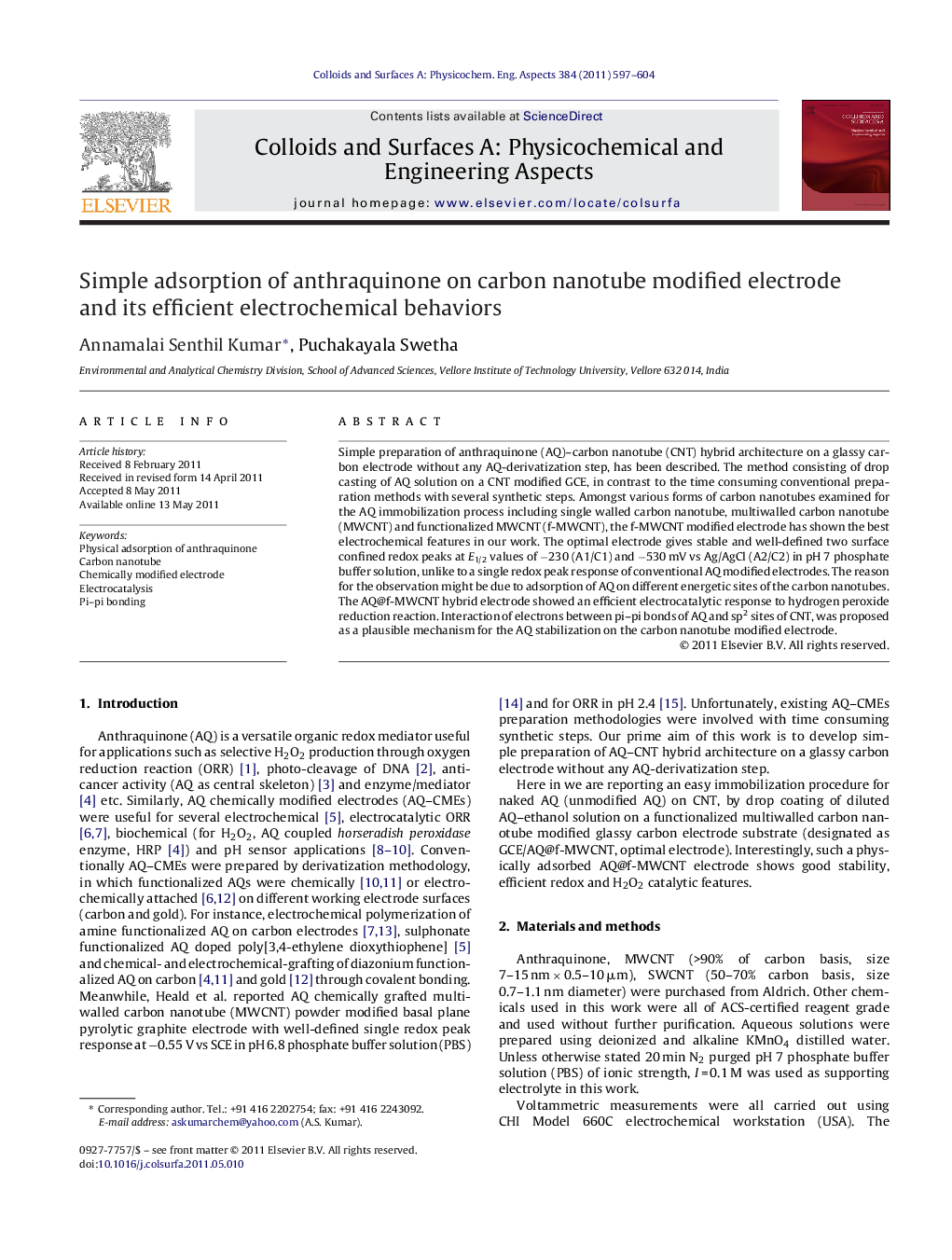| Article ID | Journal | Published Year | Pages | File Type |
|---|---|---|---|---|
| 594701 | Colloids and Surfaces A: Physicochemical and Engineering Aspects | 2011 | 8 Pages |
Simple preparation of anthraquinone (AQ)–carbon nanotube (CNT) hybrid architecture on a glassy carbon electrode without any AQ-derivatization step, has been described. The method consisting of drop casting of AQ solution on a CNT modified GCE, in contrast to the time consuming conventional preparation methods with several synthetic steps. Amongst various forms of carbon nanotubes examined for the AQ immobilization process including single walled carbon nanotube, multiwalled carbon nanotube (MWCNT) and functionalized MWCNT (f-MWCNT), the f-MWCNT modified electrode has shown the best electrochemical features in our work. The optimal electrode gives stable and well-defined two surface confined redox peaks at E1/2 values of −230 (A1/C1) and −530 mV vs Ag/AgCl (A2/C2) in pH 7 phosphate buffer solution, unlike to a single redox peak response of conventional AQ modified electrodes. The reason for the observation might be due to adsorption of AQ on different energetic sites of the carbon nanotubes. The AQ@f-MWCNT hybrid electrode showed an efficient electrocatalytic response to hydrogen peroxide reduction reaction. Interaction of electrons between pi–pi bonds of AQ and sp2 sites of CNT, was proposed as a plausible mechanism for the AQ stabilization on the carbon nanotube modified electrode.
Graphical abstractFigure optionsDownload full-size imageDownload as PowerPoint slideHighlights► Simple and derivatization-less immobilization procedure for an organic bench mark mediator, anthraquinone on carbon nanotube modified electrode. ► No linker, no anthraquinone derivatization and no surface activation steps involved in this work. ► Easy way to prepare anthraquinone–carbon nanotube hybrid architecture suitable for electrochemical, pH sensor and electrocatalytic H2O2 reduction applications.
